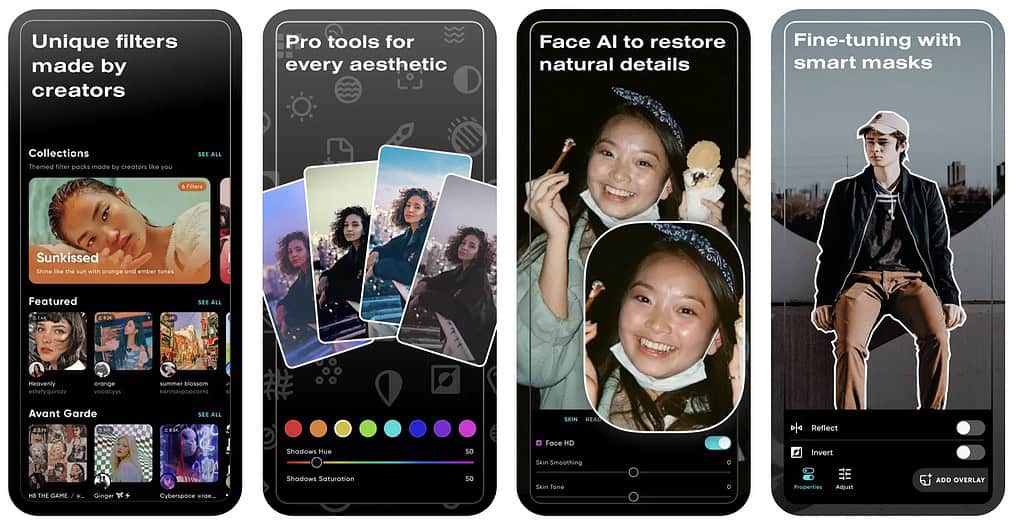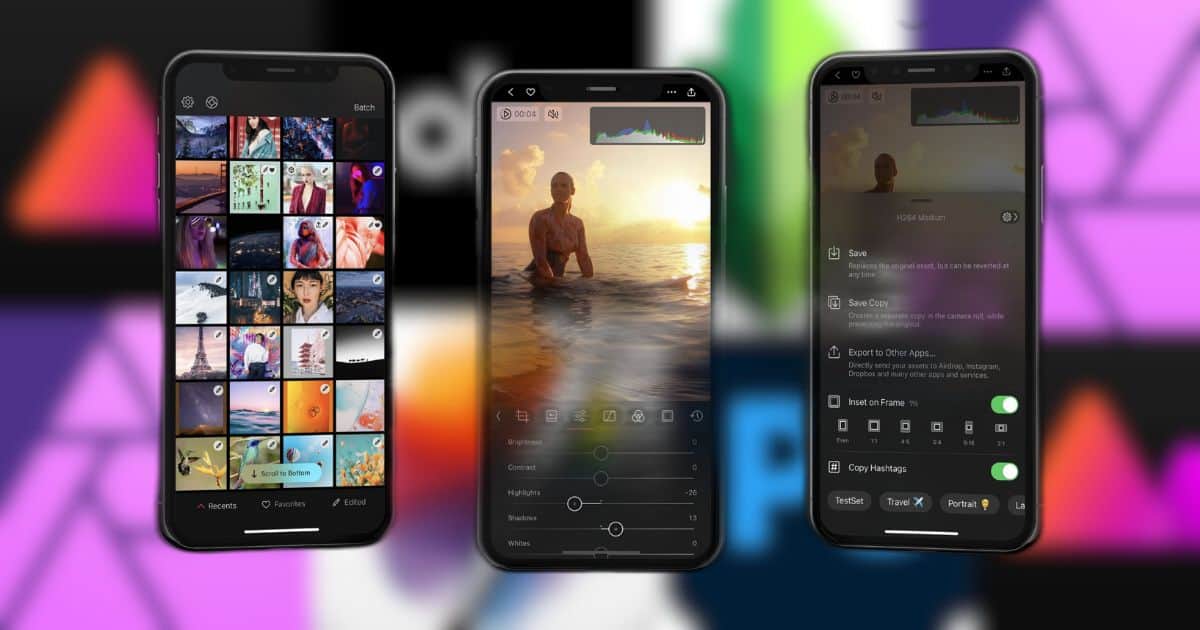It’s crazy that Adobe took over 30 years to launch Photoshop for iPhone—yet here we are. The mobile version brings a full suite of tools. Whether you’re fine-tuning an Instagram post or curating a vision board, you can treat the app as your creative partner.
That said, it’s not perfect. The free features are limited, performance bogs on larger files, and layer support is nowhere near the desktop version. It’s still a solid app, of course. But before locking yourself into a subscription, it’s worth checking out these alternatives.
1. Affinity Photo 2

Affinity Photo 2 is the closest you’ll get to full-fledged desktop editing on an iPhone. Unlike Photoshop Mobile, which prioritizes cloud integration, Affinity gives you complete local control over RAW editing, frequency separation, and advanced selection tools. Its PSD compatibility also streamlines project transfers between devices without compromising layers or adjustments.
I also like that it doesn’t push subscriptions. Photoshop Mobile locks essential tools behind a paywall, but Affinity gives you everything upfront with a one-time purchase. It’s also better optimized for large files, so you won’t experience the lag that Photoshop struggles with when handling multi-layered compositions. If you need professional-grade control without dealing with Adobe’s cloud ecosystem, Affinity is a good pick.
2. Pixelmator

Pixelmator is perfect for creatives who feel Photoshop has a steep learning curve. Its pro-level tools and AI-driven automation are great for quick edits and graphic design work. You get smart background removal, object isolation, and a solid layer system—something Photoshop Mobile still struggles with.
What makes Pixelmator stand out is its balance between simplicity and power. Photoshop Mobile can feel sluggish on older iPhones, especially with multiple layers, but Pixelmator runs smoothly thanks to Apple’s Metal framework. If you need an editor that blends pro features with speed, this is the one.
3. Polarr

Polarr is built for influencers and social media creators who need fast, polished edits without manual tweaking. Unlike Photoshop Mobile, which forces you to adjust every setting manually, Polarr lets you apply custom LUTs, AI-powered retouching, and batch edits in seconds. It’s a go-to for consistent aesthetics across Instagram feeds, TikTok thumbnails, and branding materials.
Polarr excels in workflow efficiency. When editing multiple images for a content drop, you can apply identical adjustments across an entire set instantly. Photoshop Mobile can do this, but it’s buried under layers of menus and cloud sync delays. Polarr’s AI also speeds up tasks like face retouching, something Photoshop still requires manual masking for. If your priority is speed and automation, this is the smarter choice.
4. Snapseed

Mobile photographers who need pro-level RAW editing without the clutter should consider Snapseed. Its U-Point technology allows precise local adjustments with just a tap—no need for complicated selection tools like in Photoshop. You also get pro features like curves, healing tools, and HDR tuning, all optimized for quick edits.
I particularly like that it’s zero bloat. Photoshop Mobile feels slow when handling high-resolution files, but Snapseed processes RAW images faster while keeping battery usage low. It doesn’t have a layer system, so it’s not great for compositing, but for color correction and fine-tuning details, it’s one of the best free options available.
5. Darkroom

As you might have guessed, Darkroom is designed for photographers. You’ll find it helpful if you need quick, easy deep-color grading without dragging files into a desktop app. Its biggest strength over Photoshop Mobile is speed. The app applies non-destructive edits in real time, without needing to duplicate layers or constantly sync to the cloud. You can also integrate it natively with iCloud to make your Photos library more accessible.
Photoshop Mobile tries to do everything, but Darkroom focuses on what matters: tonal adjustments, batch processing, and RAW development. If you’re editing dozens of ProRAW shots and need a clean, responsive UI, Darkroom outperforms Photoshop’s bloated interface. It’s not a replacement for deep retouching, but if your workflow is mostly color-based, it’s the smarter choice.
Again, Adobe Photoshop is a solid mobile photo editor, but it’s not the only option. Whether you need better file control, faster edits, or more advanced tools, these alternatives each bring something unique to the table. If Adobe’s subscription model or cloud reliance doesn’t fit your workflow, it’s worth trying out one of these apps instead.
